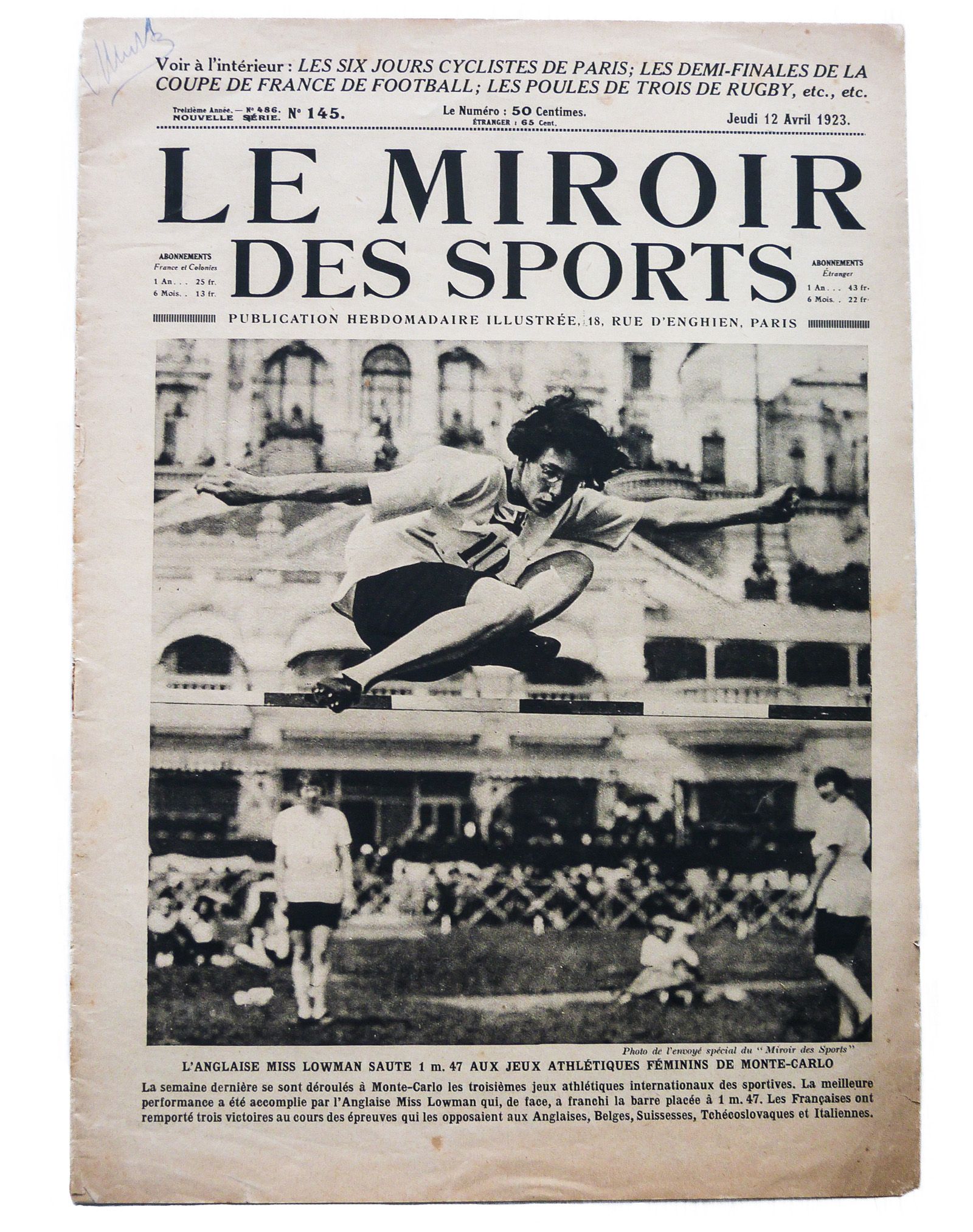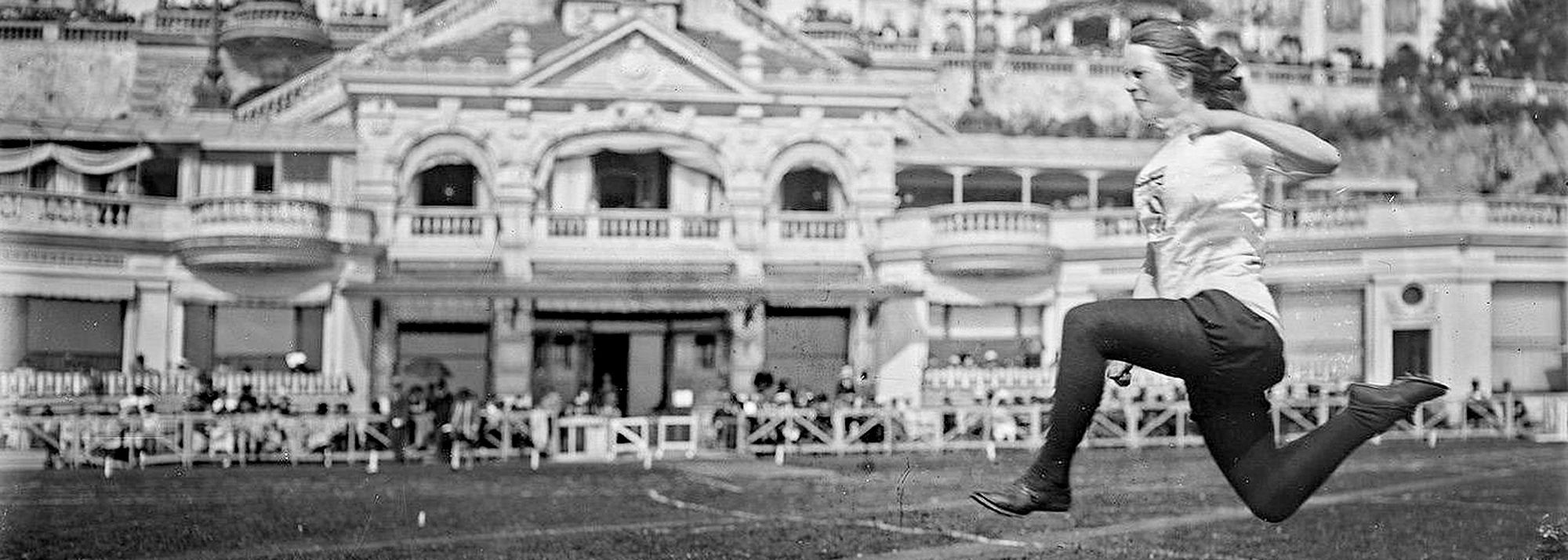Five-time gold medallist Mary Lines in action at the 1921 Women's Olympiad in Monaco (© Gallica)
The clay pigeon shooting ground perched on the terraces of the Monte-Carlo Casino Gardens were in 1921 the stage for the first international athletics tournament for women.
From 24-31 March 1921, women from five nations – France, Italy, Norway, Switzerland and the United Kingdom – gathered in Monaco to compete in the first Women’s Olympiad.
Clay pigeon shooting was a highly popular Aristocratic pastime at the start of the 20th century. When fortunes were not being won or lost on the private tables of the nearby Monte-Carlo Casino, wealthy guests staying at the adjacent Hotel de Paris kept their eye in with some shooting out to sea over the azure blue Mediterranean.
Today the shooting ground is gone, replaced by luxury apartments. All that marks the site of the first Women’s Olympiad is a marble plaque. It was unveiled on 23 November 2008 by His Serene Highness Prince Albert II of Monaco, the Honorary President of The International Athletics Foundation.

The Monte-Carlo Women’s Olympiad pre-dated women’s participation in the athletics programme of the Olympic Games which did not begin until the 1928 Amsterdam Games. Women’s participation at the Olympics in tennis and golf began in 1900. Other sporting pursuits like swimming and archery soon followed but the Olympic Games' No.1 sport remained a male preserve.
Milliat’s motivation
The Monte-Carlo competition was the initiative of Alice Milliat, a pioneer in the women’s sports movement. Milliat (born 5 May 1884 in Nantes; died 19 May 1957 in Paris), was a multi-talented sportswoman, a good rower and swimmer, who also played hockey. A pioneer for women’s rights to participate in sport, Milliat founded the International Women's Sports Federation (FSFI) in 1921.
Milliat’s principal motivation and the key objective of the FSFI was women’s participation in athletics at the Olympic Games. After numerous rebuffs from the International Olympic Committee, she began to organise international competitions for women. The first of these was the Women’s Olympiad in Monte-Carlo. It was organised with the assistance of Camille Blanc, the flamboyant mayor of the neighbouring town of Beausoleil. Blanc was President of the Société des Bains de Mer de Monaco and the director of the International Sporting Club de Monaco.
The following year in Paris, Milliat organised a follow-up competition in April 1922 called at that time the Women's Olympic Games (later renamed World Games). More than 300 women from seven countries participated. Four other editions were organised between 1926 and 1934.
What is less well known is that the ‘Monte-Carlo Games’ were staged again in 1922 and 1923.
Rare artefacts from all three editions are included in the World Athletics Heritage Collection, including the medal from the first Women’s Olympiad which is on display in the ‘Origins’ tunnel in the recently launched 3D virtual Museum of World Athletics (MOWA): worldathletics.org/mowa

Olympic participation
In 1928, Milliat finally won her long fight when women’s athletics entered the Olympic programme. Just five events were included and, following the running of the 800m which was won by Germany’s Lina Radke, the apparent distress of the competitors gave the IOC the excuse to immediately remove the event from the Games. The women’s 800m was not to reappear on the programme until 1960!
Commemorating Milliat’s enormous contribution to the development of women’s sport on the 8 March 2021 a statue of her was unveiled at the House of Sport in Paris. Her remarkable legacy lives on via the work of the foundation which bears her name: fondationalicemilliat.com
 In 1934, the FSFI began to fall apart as an organisation. Two years later the then International Amateur Athletics Association, nowadays World Athletics, officially took over management of international women’s athletics including the ratification of world records. As part of that process the IAAF endorsed FSFI’s official world record progression list.
In 1934, the FSFI began to fall apart as an organisation. Two years later the then International Amateur Athletics Association, nowadays World Athletics, officially took over management of international women’s athletics including the ratification of world records. As part of that process the IAAF endorsed FSFI’s official world record progression list.
Lines the star of 1921
The 1921 Monte-Carlo Women’s Olympiad, whose centenary we celebrate today, included 10 athletics events and there were also exhibition events in other sports including gymnastics and basketball.
The undisputed star of the Olympiad was Briton Mary Lines (1893-1978). In the three individual track events – the 60m, 250m and 800m – Lines took gold in the two shorter distances and silver in the 800m. Her dominance did not end there, with first place in the long jump and assisting the British quartet to win both the 4x75m and 4x175m relays, too!
Today few residents of Monaco let alone visiting tourists know the story of the first Women’s Olympiad. It was somewhat appropriate given the site’s ancient use that, when photographing the commemorative plaque, there were bird droppings on its face. From pigeons to Olympic participation, women’s athletics has come a long way since 1921.
Chris Turner
Curator of MOWA #WhereChampionsLive







